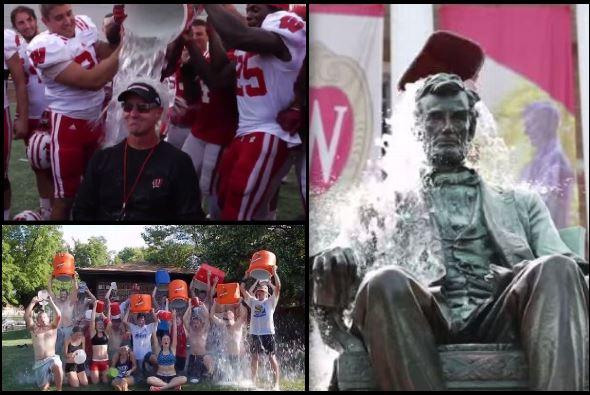I admit it. I contributed to the seemingly endless stream of ice bucket challenges that has taken over the internet. In recent weeks it has become nearly impossible to escape the social media frenzy with everyone from University of Wisconsin Chancellor Rebecca Blank to Rihanna taking part.
The concept is simple; a person nominated for the ALS Ice Bucket Challenge must either donate to the ALS Association or submit to being drenched with a bucket of ice water. There is also the unwritten third choice of doing both. The ALS Association aims to offer care and research treatment options while searching for the cure for amyotrophic lateral sclerosis, a degenerative neurological condition that affects motor neurons and can be fatal.
In the challenge, the original nominee then nominates a handful of people, and thus, more donations are solicited. However, in addition to going viral, the ice bucket challenge, like several other online campaigns, has also received criticism and accusations of “slacktivism.”
True, social media challenges to raise awareness and money often fall into the trap of slacktivism. Slacktivism – as defined by Urban Dictionary – is “the act of participating in obviously pointless activities as an expedient alternative to actually expending effort to fix a problem.” Slacktivism usually arises from well-intentioned campaigns that ultimately miss the mark on achieving their desired result or take on a life of their own outside of the original goal. Perhaps the largest activism turned slacktivism comes from the infamous Kony 2012 campaign. The campaign achieved viral status (100 million views in six days) but failed to achieve the campaign’s purpose of bringing African warlord Joseph Kony to justice. However, the ALS ice bucket challenge can serve as an example of a social media campaign that has elicited legitimate results and should not be considered slacktivism.
While it would be ridiculous to claim that daring our friends to have freezing water poured on them and then posting it on the internet for the public to view is activism, that is not the goal of the ice bucket challenge. It is merely a method to solicit more donations. The goal is to raise donations for the ALS Association while promoting awareness of the disease, and it has succeeded. Yes, the ice bucket challenge has given us more than hypothermia and “Ice Bucket Challenge Fail” videos. It has provided fiscal results for a legitimate charity organization. From July 29 to Aug. 29, the ice bucket challenge raised $100.9 million in donations to the ALS Association. This is a $98.1 million increase from the same period last year. These donations were made by previous donors and more than three million new donors. This money is real and will make a difference in the care and research that the ALS Association strives to accomplish.
So did filming my mom eagerly dumping a bucket of cold water over me in my grandma’s garden, or me posting that video to social media, make everyone aware of ALS? No. Did my $10 contribution cure anyone’s ALS? No. But my $10 is only part of the bigger picture. In doing the ice bucket challenge, I contributed to a collective effort that has made a large contribution to the ALS Association. Millions of dollars’ worth of donations, donations that would not be there without the creative platform that the ice bucket challenge provided, will now be allocated to caring for those who have ALS and research that will develop treatment options. That is not slacktivism. That is an illustration of what happens when individuals put in what they can and the culmination is larger than what anyone expected. So while the ice bucket challenge could fizzle out, what matters is that the more than $100 million of results will not.
Madeline Sweitzer ([email protected]) is a sophomore majoring in political science and intending to major in journalism.














